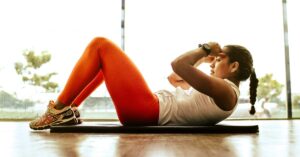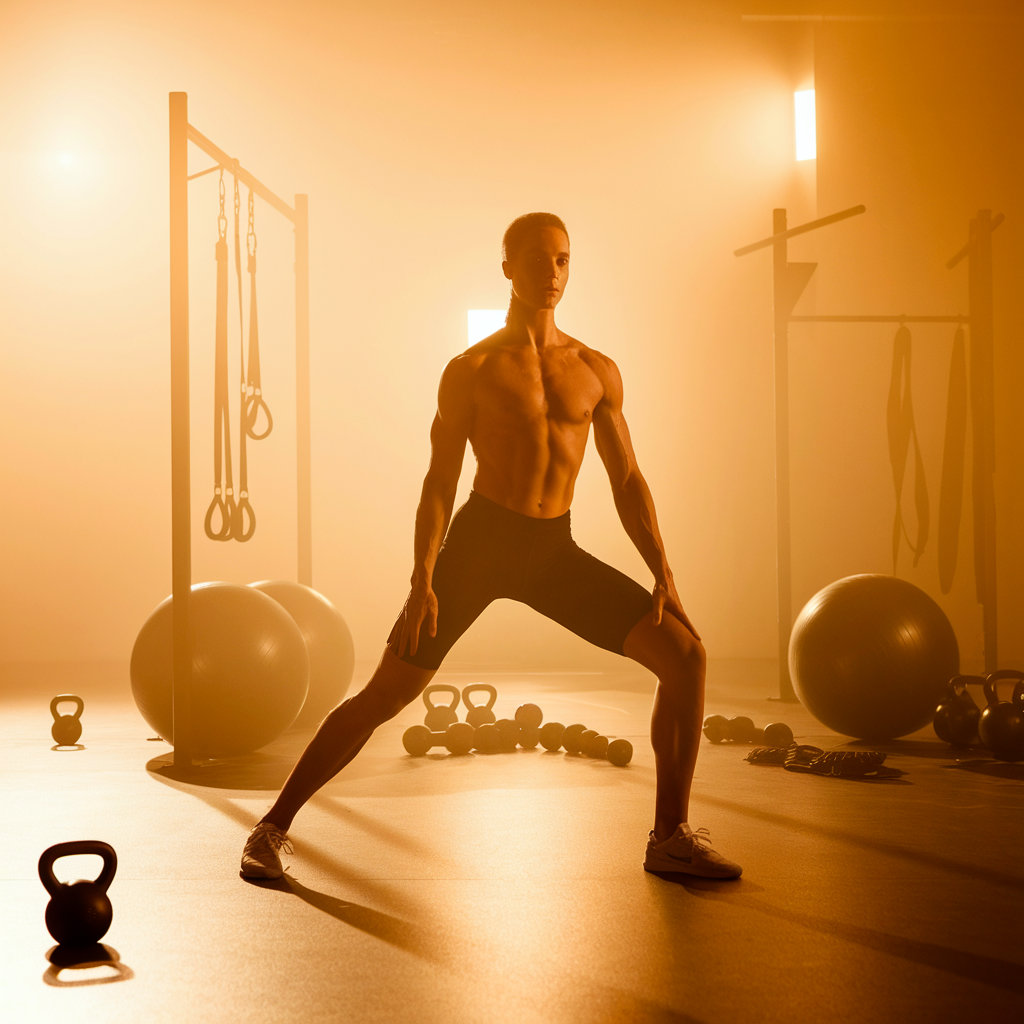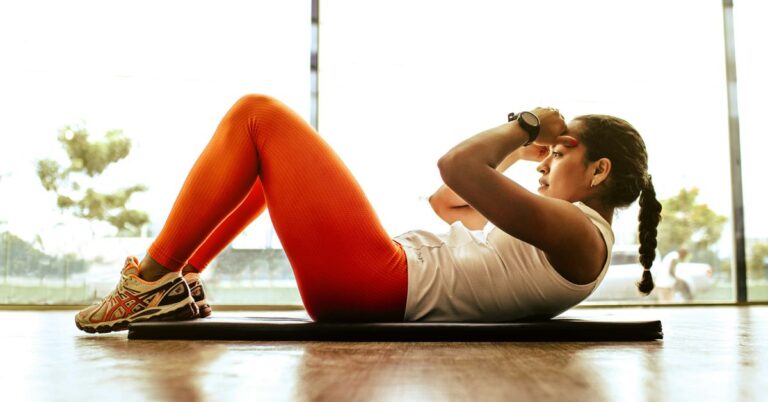Functional Training: What It Is and Why It Matters
Have you ever watched someone effortlessly lift a heavy box or sprint up a flight of stairs without breaking a sweat? It’s a sight that can evoke a mix of admiration and envy—especially if you’ve ever found yourself gasping for breath after a few steps. The secret behind that effortless movement? Functional training.
But what exactly is functional training, and why is it garnering so much attention in the fitness world? Is it just another buzzword, or does it hold substantial merit? As someone who has spent years observing fitness trends and the evolution of training methodologies, I can assure you—this is not just a passing fad. Functional training is a comprehensive approach that aims to prepare your body for real-life activities. Let’s unpack this intriguing concept and explore why it matters.
The Basics of Functional Training
At its core, functional training involves exercises that mimic everyday movements. Think about how often you squat to pick something up, reach overhead to grab a box, or twist to grab something from behind you. Functional training focuses on improving strength, balance, coordination, and endurance through these movements.
Unlike traditional weightlifting, which often isolates specific muscle groups, functional training emphasizes training multiple muscle groups simultaneously. It’s about creating a synergy of strength, flexibility, and stability—essentially preparing your body for the unpredictable demands of daily life.
Here are some key principles that define functional training:
- Multi-Dimensional Movements: Exercises are designed to incorporate various planes of motion—forward, backward, sideways, and rotationally.
- Core Stability: A strong core is essential for functional movements. Many functional exercises focus on engaging core muscles.
- Balance and Coordination: Many functional routines involve balance challenges that require coordination and agility.
- Real-Life Application: The aim is to enhance everyday tasks, making daily movement easier and reducing the risk of injury.
A Brief History
It’s fascinating to consider how functional training has evolved over the years. The term itself started gaining traction in the 1990s when physical therapists and trainers began emphasizing the importance of training for real-world activities. (I remember reading about it for the first time in some fitness magazines, and it piqued my curiosity.)
Initially, functional training was primarily used for rehabilitation and injury prevention, but its application quickly expanded to athletic training and general fitness. Now, you can find functional training programs in gyms worldwide, often disguised under trendy names like “boot camp” or “HIIT.”
Why Functional Training Matters
So, why should we care about functional training? Isn’t it enough to just hit the gym and lift weights? Well, let me share a few compelling reasons that highlight the importance of incorporating functional training into your fitness routine.
1. Enhanced Daily Performance
Functional training is about more than just aesthetics; it’s about building a body that works efficiently in everyday situations. Whether you’re lifting groceries, playing with your kids, or even just getting up from the couch, functional training prepares your body for these movements.
Consider the classic squat. It’s not just an exercise; it’s a fundamental movement pattern that we perform daily. By incorporating squats into your training, you’re not just developing leg strength—you’re improving your ability to sit down and stand up with ease, which can become increasingly important as we age.
2. Injury Prevention
One of the most significant benefits of functional training is its role in injury prevention. By strengthening the muscles that support your joints and improving balance and coordination, you’re less likely to experience injuries during daily activities or sports.
For instance, a study published in the Journal of Strength and Conditioning Research found that athletes who engaged in functional training had a lower incidence of injuries compared to those who relied solely on traditional weightlifting. This is likely due to the emphasis on movement patterns that mirror those encountered in real life.
3. Improved Core Strength
Let’s take a moment to talk about the core—those mysterious muscles that seem to be at the center of almost every fitness discussion. A strong core is essential for stability, posture, and overall physical performance. Functional training places a strong emphasis on core engagement, often integrating it into exercises rather than isolating it in crunches.
When you perform a functional exercise like a kettlebell swing, your core is actively engaged to stabilize your body throughout the movement. This not only strengthens your core but also translates to better performance in everyday tasks. (And who doesn’t want to look good while doing them?)
4. Flexibility and Mobility
Incorporating functional training into your routine can also enhance flexibility and mobility. Many functional movements involve dynamic stretching and full range of motion, which can contribute to greater overall flexibility. This is particularly important for maintaining joint health and preventing stiffness as we age.
Think about it—when was the last time you had to perform a static stretch in real life? Chances are, it was a while ago. Functional training emphasizes movements that require fluidity and adaptability, which is much more applicable to daily life.
5. Mental Engagement
Functional training isn’t just a physical endeavor; it’s also a mental challenge. Many exercises require coordination, balance, and focus, which can help keep your brain sharp. As someone who has occasionally found myself zoning out on the treadmill, I can appreciate the mental engagement that comes with functional workouts.
Moreover, the varied nature of functional training keeps things interesting. It’s easy to get bored with a repetitive gym routine, but functional exercises often incorporate elements of play and creativity. You might find yourself laughing while attempting to balance on one leg and toss a medicine ball to a partner. (Trust me, it’s harder than it sounds!)
Getting Started with Functional Training
Feeling intrigued? Ready to give functional training a shot? Here’s a simple guide to help you navigate those first steps. No need to feel overwhelmed—functional training can be tailored to suit all fitness levels.
Assess Your Current Fitness Level
Before diving in, take a moment to assess your current fitness level. Are you a beginner, or have you been working out for years? Understanding your starting point will help you choose appropriate exercises and avoid injury.
Find a Qualified Trainer
If you’re new to functional training, consider working with a qualified trainer who can guide you through the exercises and ensure you’re using proper form. This is particularly important to prevent injuries and maximize the benefits of your workouts. A good trainer can also personalize your program based on your goals and needs.
Start with Basic Movements
Begin by mastering basic functional movements before progressing to more complex exercises. Here are a few foundational movements to incorporate:
- Squats: Great for building lower body strength and improving mobility.
- Lunges: Excellent for balance and coordination, and they mimic everyday movement patterns.
- Push-ups: A classic upper body exercise that engages the core.
- Planks: Perfect for core stability and strength.
- Deadlifts: Great for posterior chain strength, mimicking the movement of picking items off the ground.
Incorporate Balance and Coordination Exercises
Once you’re comfortable with basic movements, add balance and coordination exercises to your routine. Examples include single-leg balances, stability ball exercises, and agility drills. These will challenge your body and prevent it from adapting too easily to the movements.
Use Functional Equipment
Functional training often incorporates various pieces of equipment like kettlebells, resistance bands, medicine balls, and stability balls. Don’t be afraid to experiment with these tools; they can add variety and challenge to your workouts. (Plus, they look pretty cool in the gym.)
Listen to Your Body
As with any training regimen, it’s essential to listen to your body. If something doesn’t feel right, don’t push through the pain. It’s better to modify an exercise or seek guidance than to risk injury. Remember, functional training should enhance your quality of life, not hinder it.
Functional Training Programs to Explore
If you’re looking for structured programs, many gyms and fitness centers offer functional training classes. These classes often blend high-intensity interval training (HIIT) with functional movements, creating a dynamic workout that keeps you engaged.
Additionally, online platforms have emerged, featuring a plethora of functional training workouts that you can do at home or in the gym. Whether you prefer guided sessions or independent workouts, there are options available to suit your style. (I’ll admit, I’ve binge-watched a few workout videos myself while lounging on the couch.)
Consider Group Classes
Don’t underestimate the power of community in fitness. Group classes can provide motivation, camaraderie, and accountability. Plus, they’re often a lot of fun! With a shared goal and a little friendly competition, you might find yourself pushing harder than you would solo.
Track Your Progress
Like any fitness endeavor, tracking your progress is essential. Keep a journal or use fitness apps to log your workouts and monitor improvements in strength, endurance, and flexibility. Celebrate your achievements—no matter how small they may seem. (Trust me, progress is progress!)
Conclusion: The Future of Fitness
As we navigate an ever-evolving fitness landscape, functional training stands out as a vital component of overall health and well-being. It’s not just about lifting weights or achieving a certain body type; it’s about creating a body that moves well, feels strong, and can tackle the challenges of everyday life.
Whether you’re an athlete looking to enhance your performance or someone simply trying to make daily activities a little easier, functional training has something to offer. It’s a comprehensive approach that celebrates movement, encourages playfulness, and ultimately fosters a healthier lifestyle.
So, the next time you find yourself picking up that heavy box or chasing after your kids, remember the power of functional training. Embrace the concept, explore new movements, and enjoy the journey to a more functional and resilient you. After all, life is about more than just lifting weights; it’s about living fully and freely.
Now, if you’ll excuse me, I think I hear my dumbbells calling my name. Time to lift, twist, and squat my way through another day!









